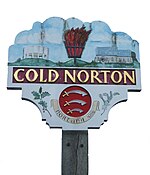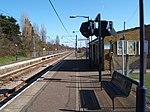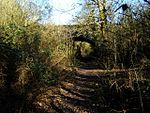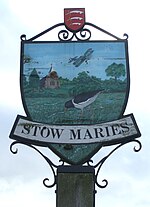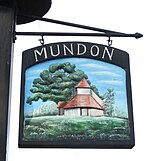Cold Norton railway station

Cold Norton railway station served the village of Cold Norton, Essex. It was opened on 1 October 1889 by the Great Eastern Railway on a single-track branch line (Engineer's Line Reference WFM) from Woodham Ferrers to Maldon West. The station was 3 miles 31 chains (5.45 km) from Wickford Junction and had a single platform on the west side of the running line and a passing (goods) loop, a station building, a parcels shed, goods sidings, and a 30-level signal box which was reduced to a ground frame in 1939. The station name was originally Cold Norton for Purleigh and Stow Maries this was later changed to Cold Norton for Latchingdon.There was a fatal railway accident near Cold Norton in 1899.The station was closed to passengers in September 1939 but the line remained in use for goods traffic until 1959.
Excerpt from the Wikipedia article Cold Norton railway station (License: CC BY-SA 3.0, Authors, Images).Cold Norton railway station
Latchingdon Road, Essex
Geographical coordinates (GPS) Address Nearby Places Show on map
Geographical coordinates (GPS)
| Latitude | Longitude |
|---|---|
| N 51.6718 ° | E 0.6738 ° |
Address
Latchingdon Road
Latchingdon Road
CM3 6JB Essex, Cold Norton
England, United Kingdom
Open on Google Maps
